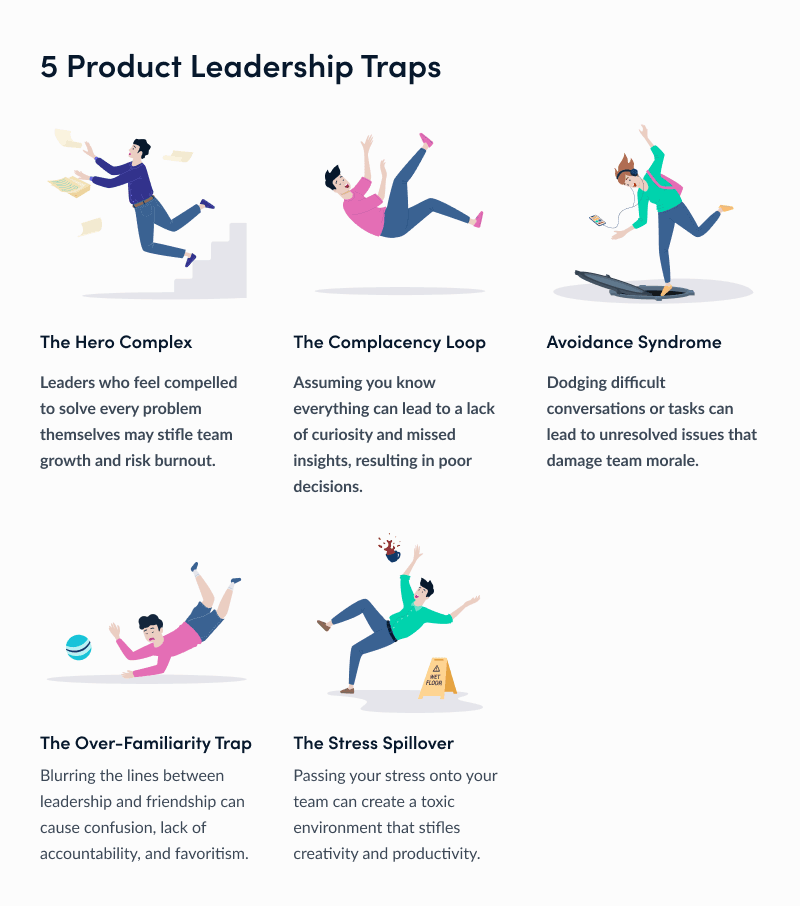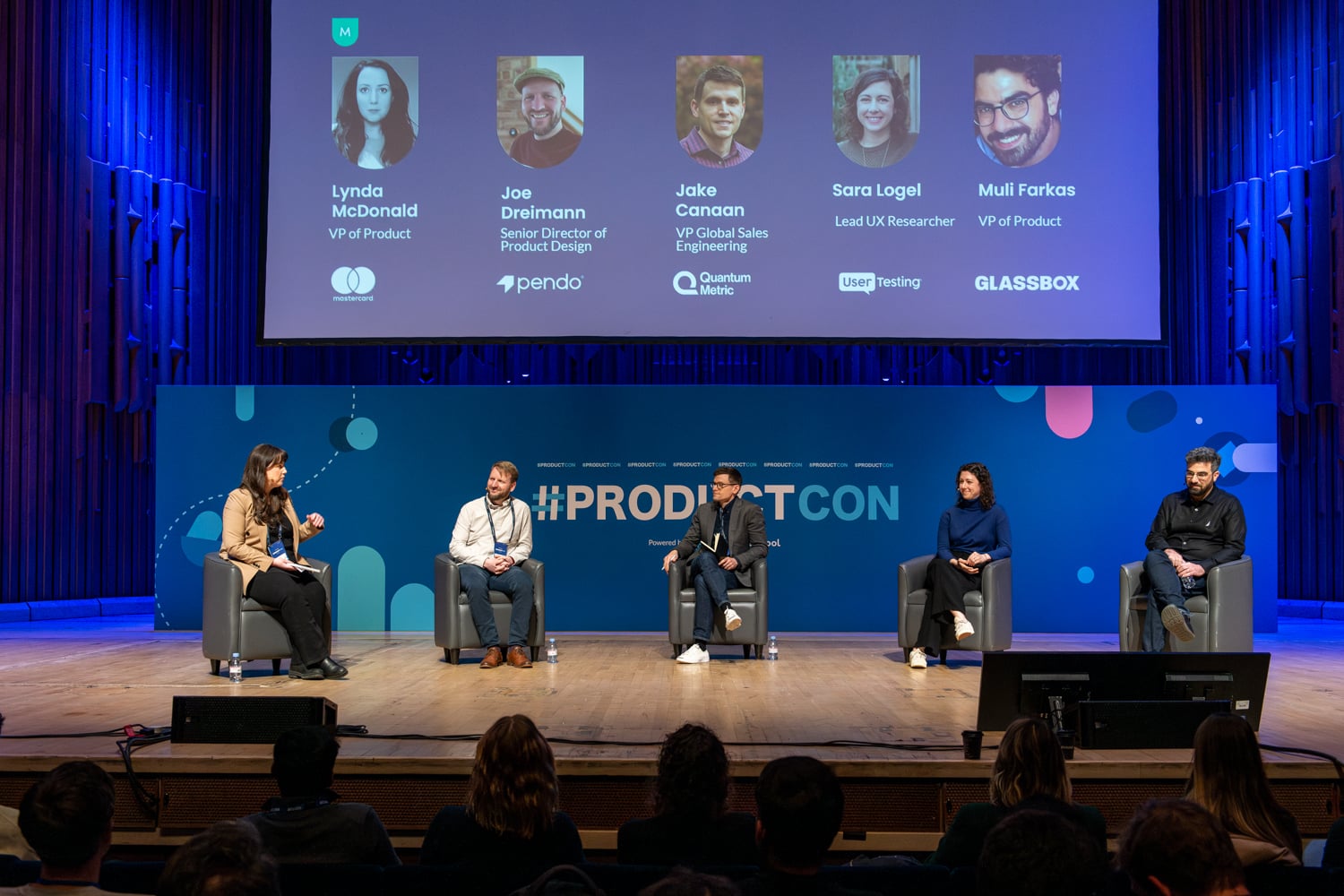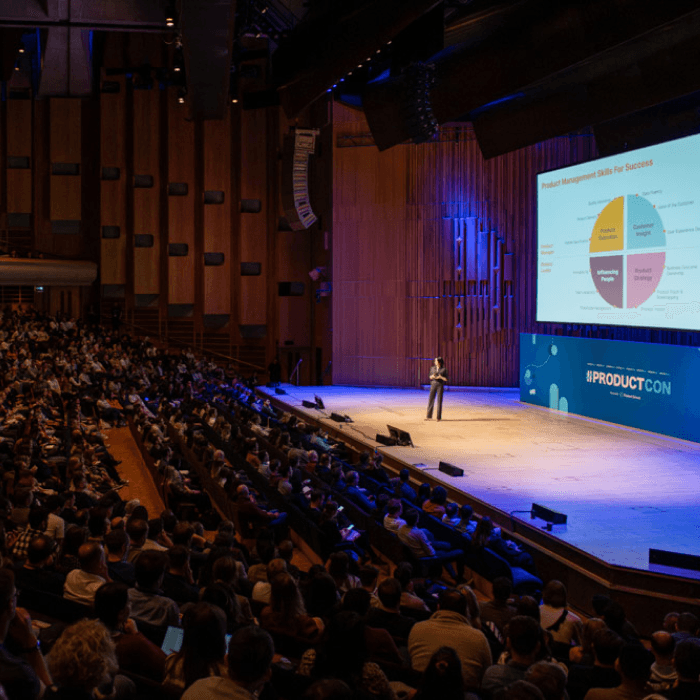Updated: June 18, 2025- 10 min read
Power changes things. It shapes how others see you and how they act around you. Feedback becomes filtered, your ideas are praised more, and your actions are judged more closely by everyone. Once you step into product leadership, you’re no longer just part of the team — you become the standard.
In product leadership, recognizing the weight of power is essential.
This piece breaks down key roles, the difference between leading and managing, the path to becoming a strong leader, and the challenges that come with it — with real insights from those who’ve been there. Keep reading or skip ahead to a specific topic:
Product Leadership Certification
Elevate your product strategy and decision-making by integrating AI-driven insights.
Enroll now
Product Leadership Definition: What Is Product Leadership?
Product leadership is the process of guiding an organization in the creation, development, launch, and management of a product. It involves setting a clear Product Vision, defining the Product Strategy to achieve that vision, and leading the team through the execution of the product strategy.
Product leadership goes beyond just managing the day-to-day operations of product development. It requires a deep understanding of the market, customer needs and competition, Go-to-market Strategies and Launch Plans, as well as the intricacies of managing complex Product Portfolio.
Essentially, product leadership is about driving a product's success by leading with clarity, making informed, data-backed decisions, and motivating the team to achieve shared goals. It’s a role that demands both strategic thinking and hands-on involvement. The focus will constantly be on delivering a product that meets business objectives and resonates with users.
Who is a Product Leader?
A product leader is a strategic visionary who steers the product-oriented company from concept to market success. They manage teams rather than products. By focusing on people and their development instead of the product itself, they’re ultimately steering the product.
They are the key decision-makers who not only understand the product’s potential but also have the ability to inspire and guide their teams toward achieving that potential. A product leader must also possess strong soft skills. These are crucial for cross-functional teams like engineering, design, marketing, and sales around the product vision.
A product leader is responsible for making key decisions that align the product with the overall goals of the company. This way, they know it meets market demands and delivers value to customers.
Key Product Leadership Roles
In a product leadership team, roles vary in responsibility and scope. They span from high-level strategic oversight to hands-on management of specific products or features. Each position plays a distinct part. Here are the nuanced differences:

Chief Product Officer (CPO): The CPO is the highest-ranking product executive in the organization. They set the overall product strategy, align it with the company’s goals, and ensure that all product teams are working toward the same vision. The CPO often reports directly to the CEO and is responsible for the long-term success of the product portfolio.
Vice President of Product (VP): The VP of Product oversees multiple product teams and ensures that their work aligns with the company’s strategic objectives. They work closely with the CPO to implement the product strategy and often manage the Directors of Product within the organization.
Director of Product Management (DPM): The Director of Product Management leads a group of product managers and is responsible for specific product lines or areas. They focus on the execution of product strategies, oversee the development process, and ensure that the product meets market needs. They also act as a bridge between the VP of Product and the product managers.
Group Product Manager (GPM): A GPM manages a team of product managers working on related products or features. They are responsible for coordinating efforts across their team, ensuring consistency in product development, and maintaining alignment with the overall product strategy.
Principal Product Manager (PPM): A Principal Product Manager is a senior-level product manager who takes on more complex and high-impact projects. They often work on the most critical products or features and have a significant influence on the overall product strategy. PPMs might mentor other product managers but they usually aren’t obligated to write direct reports. Needless to say, they bring deep expertise and make high-level decisions that shape the product's future.
Product Leadership vs. Product Management
Sure, product leadership and product management are closely related. Yet, they differ in scope and responsibility.
Product management is about the hands-on work of managing a product's lifecycle — defining the Product Roadmap, assessing Product Experience, coordinating with teams, ensuring Product-led Growth, and ensuring that the product meets its KPIs and OKRs. Product managers focus on the day-to-day execution, working closely with engineering, design, and marketing to bring the product to life.
Product leadership, on the other hand, is broader and more strategic. Product leaders, like the CPO or VP of Product, set the overall vision and strategy.
They guide the direction and manage multiple products, align them with the company's goals, and make high-level decisions that impact the entire organization. While product managers focus on individual products, product leaders oversee the big picture. They ensure that all efforts work together to drive tangible outcomes and collective business success. As Francois Ajenstat, a Chief Product Officer at Amplitude, puts it on the Product Podcast:
Caring deeply about outcomes rather than personal comfort is fundamental to effective leadership. In high-stakes scenarios, such as decision-making or managing team dynamics, this mindset encourages a focus on collective goals and organizational success.
Despite these differences, there’s overlap. Product leaders often start as product managers, and they still need to understand the details of product management. Both roles require strong communication, a deep understanding of customer needs, and the ability to align cross-functional teams.
However, the key difference lies in the scale and scope of their responsibilities — product management is about execution, while product leadership is about strategy and vision.
How to Become a Product Management Leader
Becoming a product leader requires more than just experience in product management. It demands a shift in mindset, skillset, and approach.
As any senior product leader will point out, this journey is about growing beyond managing tasks. It’s about guiding teams, learning how to make decisions, and prompting others to do the same. It's about having a grasp of the big picture while staying grounded in execution.
As Michelle Parsons, a Product Leader at Netflix & Spotify, pointed out, “What got you here won’t get you there.” She says these words of general wisdom really do hold water when it comes to transitioning to product leadership. These words struck a chord and prompted her to make several key steps at that juncture.

5 steps that lead to product leadership
If you're aiming to transition into product leadership, here are 5 key steps to consider:
Adopt a strategic product mindset: Think beyond day-to-day tasks and focus on long-term goals. Always consider how today’s decisions will impact the future of your product and company.
Master product strategy and roadmap: Develop a deep understanding of market trends and customer needs. Use data-driven product management to anticipate market shifts and position your product to stay ahead.
Influence stakeholders: Build strong relationships and align others with your vision. Learn to speak the language of different stakeholders. Address their specific concerns to gain their full support.
Commit to product-oriented learning: Keep growing through feedback, networking, and learning. Explore reputable product leadership certifications. Stay curious and adaptable, as the product landscape is always evolving.
These actionable insights can guide you in transitioning from product management to product leadership, enabling you to lead with confidence and impact.

5 Common Product Leadership Traps
In product leadership, power can make way for several common traps that can undermine your effectiveness. Recognize these five common traps early on so they don't derail your career development in product leadership.

One such trap is "The Hero Complex" (1), where you feel the need to have all the answers and solve every problem. While it might seem helpful, this approach can stifle your team's growth and lead to burnout. To avoid this, empower your team to find solutions themselves, encourage taking ownership, and practice restraint in offering unsolicited advice.
Another pitfall is "The Complacency Loop" (2), where leaders fall into the habit of assuming they know everything. This leads to a decline in curiosity and critical questioning. The notorious loop can cause you to miss important insights and make poor decisions. Combat this by actively seeking out diverse perspectives. Encourage a culture of continuous learning, employ Agile Retrospectives and Product Analysis meetings, and inquiry within your team.
The "Avoidance Syndrome" (3) is another common issue. In this case, leaders dodge difficult conversations or unpleasant tasks, delegating them to others or ignoring them altogether. While this might reduce immediate stress, it can lead to unresolved issues festering and diminishing team morale. To counter this, consciously tackle difficult tasks head-on. Manage conflict effectively in cross-functional teams. Recognize that avoiding issues can have long-term negative impacts on your leadership and your team’s effectiveness.
"The Over-Familiarity Trap" (4) occurs when leaders blur the lines between being a leader and a friend. This is especially common with former peers who are now direct reports. Confusing leadership with friendship can lead to confusion, lack of accountability, and even favoritism. To avoid this, maintain professional boundaries and ensure that your decisions are driven by fairness and the needs of the team rather than personal relationships.
Finally, "The Stress Spillover" (5) is a trap where leaders, under pressure, unintentionally pass on their stress to their teams. This can create a toxic environment where creativity and productivity are stifled. To manage this, develop healthy stress management habits, such as mindfulness or regular breaks. Be mindful of how your behavior affects those around you. Your ability to stay calm under pressure will set the tone for your team.
Recognizing and addressing these traps is essential for maintaining effective leadership and fostering a positive and productive work environment.
Top 5 Challenges in Leadership in Product Management
Product leadership comes with a unique set of challenges that require a strategic approach to overcome. Here are five of the most common challenges and practical solutions to navigate them effectively.
Balancing Product Vision and Execution: Leaders must balance big-picture thinking with day-to-day operations. Set clear priorities and delegate effectively to ensure the vision is achieved without getting lost in the details.
Aligning Cross-Functional Teams: Misalignment between teams can slow progress. Foster strong communication and collaboration through regular cross-functional leadership.
Managing Stakeholder Expectations: Diverse stakeholder interests can be challenging to navigate. Maintain transparency and manage expectations through regular updates and clear communication of product goals.
Adapting to Market Changes: Rapid market shifts can derail a product strategy. Truly transform to Agile. Continually gather market feedback and be ready to pivot your strategy as needed.
Sustaining Team Motivation: Keeping the team motivated over long product cycles can be difficult. Celebrate small wins, provide continuous feedback, and ensure the team understands the impact of their work on the bigger picture.
Product Leaders Take Action
As a leader, you don’t just need to master processes or manage projects. You need to evolve as a leader who inspires, challenges, and empowers.
As you balance vision with execution, align diverse teams, and adapt to a dynamic market, remember that the true measure of success lies in how effectively you guide your team.
Embrace these insights, recognize the common traps, and tackle the challenges head-on. The path to impactful product leadership is paved with single, deliberate steps — so take the leap, refine your approach, and lead with purpose.
ProductCon: Where Product Leaders Gather
Join us at the world's largest product conference for inspiring talks from top Product Leaders. Whether you're a seasoned Product Leader looking to network and share insights or a PM looking to become a leader, ProductCon is the place to go. Join us in person in San Francisco, London, and New York or online for free from anywhere.
FREE TICKETS
Updated: June 18, 2025




